Good news! Summer is here! And we’re thinking “Vacation Time.” Now, you don’t have to be a professional photographer to figure out that you’re going to take a camera. So the question becomes, are you going to take your camera that has been sitting around for umpteen years or use your upcoming vacation as an excuse to buy a new one. (When it comes to buying camera gear, any excuse will do, at least for some of us.)
What Kind of Camera?
If you’re going to buy a new camera the logical question is, “What kind of camera?” You basically have two choices – point and shoot or digital SLR. Point and shoot cameras are compact and self contained. Digital SLRs have changeable lenses. As with anything in life there are pros and cons to each. Let’s take a look.
Sensor
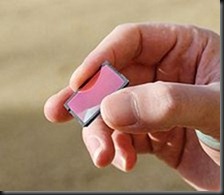 Probably the one digital camera component that gets the most hype is the sensor. That’s the light sensitive electronic device that takes the place of film. There’s a lot of misinformation surrounding these important wafers of silicon. The hype of course is all over MEGAPIXELS. And the implication is, ‘More is Better,” but that’s definitely NOT true. It depends (again, like most things in life).
Probably the one digital camera component that gets the most hype is the sensor. That’s the light sensitive electronic device that takes the place of film. There’s a lot of misinformation surrounding these important wafers of silicon. The hype of course is all over MEGAPIXELS. And the implication is, ‘More is Better,” but that’s definitely NOT true. It depends (again, like most things in life).
The first thing to understand (and the point that often gets glossed over) is that in order to cram more pixels into an area of fixed size you have to make each pixel smaller. Logical, right? So what. It’s simple; the larger the pixels the better the image quality. Smaller pixels are prone to more noise, especially at higher ISOs. Noise is a sort of blotchy look that appears in shadowy areas of your image. It can be a real game killer.
And the other thing to understand is that the sensors in point and shoot cameras are smaller than those in digital SLRs, much smaller. So if you have a 12M pixel sensor in a point and shoot camera and a 12M pixel sensor in a digital SLR, the SLR will produce the higher quality pictures.
So here’s a tip. If you choose to go with a point and shoot camera I personally wouldn’t go above 10M pixels. With a digital SLR 12M pixels will give you the same resolution as a 35mm frame of film. I should quickly mention with regards to digital SLRs that they come in two different sensor sizes – full frame (which is the size of a 35mm frame of film) and crop (AKA APS-C crop which is a bit smaller). Most consumer and prosumer digital SLRs have APS-C sensors. Full frame digital SLRs are aimed at the pro and serious amateur and are a bit on the pricy side.
Lens
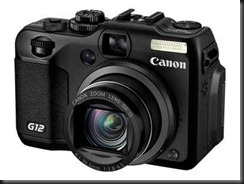 The next thing I look for in a camera is the lens. Point and shoots have built in lenses and you can’t change them. So you want a zoom. I look for a decent optical zoom (forget digital zoom, it just uses an even smaller portion of the sensor to simulate a zoom). You can get good point and shoot cameras that have optical zooms anywhere from 6X to 12X or possibly even more.
The next thing I look for in a camera is the lens. Point and shoots have built in lenses and you can’t change them. So you want a zoom. I look for a decent optical zoom (forget digital zoom, it just uses an even smaller portion of the sensor to simulate a zoom). You can get good point and shoot cameras that have optical zooms anywhere from 6X to 12X or possibly even more.
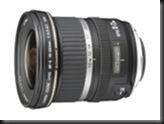 With digital SLRs the solution is both easy and difficult. It’s easy because all you have to do is buy another lens. And it’s difficult because now you have to carry around the extra lenses. I look for a set of lenses that will give me a range of focal lengths that range from about 20mm to 200mm. There are actually several lens manufactures that produce 18-200mm lenses. These are really versatile lenses but at a cost. Making zoom lenses is hard and making one that is so extreme requires tradeoffs. So the image quality is not as good as a couple of lenses that cover the same focal length range. But if you’re not going to make really large prints from your images then it’s probably a moot point.
With digital SLRs the solution is both easy and difficult. It’s easy because all you have to do is buy another lens. And it’s difficult because now you have to carry around the extra lenses. I look for a set of lenses that will give me a range of focal lengths that range from about 20mm to 200mm. There are actually several lens manufactures that produce 18-200mm lenses. These are really versatile lenses but at a cost. Making zoom lenses is hard and making one that is so extreme requires tradeoffs. So the image quality is not as good as a couple of lenses that cover the same focal length range. But if you’re not going to make really large prints from your images then it’s probably a moot point.
Image Stabilization
While on the subject of lenses I should mention image stabilization. This is a technology that helps compensate for the inevitable little jiggles when you shoot hand held. Most point and shoot cameras have image stabilization built right into the camera itself. Also, some digital SLR manufactures have taken this approach while others require you to buy image stabilized lenses.
Image stabilization is an amazing technology and one you’ll want to take into consideration when making your decision.
Camera Modes
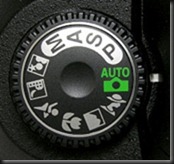 Camera modes control how your camera helps you take the picture and there’s not much difference here between point and shoots and most digital SLRs. They both have the standard modes of Automatic (AUTO) and Program (P). They also have Manual (M), aperture priority (A or Av) and shutter priority (S or Tv). But they also have Scene modes that configure the camera to photograph in very specific situations such as portraits, landscape, close up and action. These are the traditional ones. But there are also modes for photographing at the beach or in the snow or even fireworks and more. (What’s interesting is the high end professional cameras don’t have these fancy modes. Guess they figure a professional photographer should now how to photograph fireworks.) One thing to be aware of, however, is these modes only work when shooting JPEGs (see below).
Camera modes control how your camera helps you take the picture and there’s not much difference here between point and shoots and most digital SLRs. They both have the standard modes of Automatic (AUTO) and Program (P). They also have Manual (M), aperture priority (A or Av) and shutter priority (S or Tv). But they also have Scene modes that configure the camera to photograph in very specific situations such as portraits, landscape, close up and action. These are the traditional ones. But there are also modes for photographing at the beach or in the snow or even fireworks and more. (What’s interesting is the high end professional cameras don’t have these fancy modes. Guess they figure a professional photographer should now how to photograph fireworks.) One thing to be aware of, however, is these modes only work when shooting JPEGs (see below).
Movies
It seems like every camera these days makes movies. This is a really fun addition to the whole notion of a still camera and allows you to capture vacation moments as they unfold in time – like uncle Selmer dancing with a lamp shade on his head. You can’t hardly buy a camera these days that is not capable of taking movies.
Flash
Not all of your photographs will be taken outdoors in the bight sunlight. Some will be taken indoors and you will want a flash. (Warning: Most museums, cathedrals and the like do not allow the taking of flash photographs.) But when you can use flash and need it, it’s great to have.
Virtually all Point and shoot cameras have built in flash. The problem is that it’s close to the lens and that means red eye. Many digital SLRs have built in flash but it’s also close to the lens and produces red eye but not as bad as point and shoots. But digital SLRs have a hot shoe that lets you attach an external flash which, if you want to reduce red eye, is the best and most flexible solution. It’s just one more thing to carry around.
My personal preference is to never shoot flash – well almost never. I prefer to jack up the ISO so that I can get the shot with available light.
Batteries
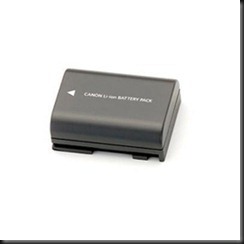
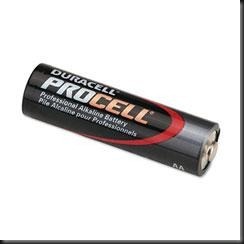 You can’t talk about digital cameras of any kind without the subject of batteries coming up. Some point and shoots allow you to use regular AA or AAA batteries. You can buy these wherever batteries are sold. Others use proprietary (and expensive) rechargeable batteries as do virtually all digital SLRs. If you use rechargeable batteries you need to bring along your battery charger so you can recharge your batteries in your hotel room every night.
You can’t talk about digital cameras of any kind without the subject of batteries coming up. Some point and shoots allow you to use regular AA or AAA batteries. You can buy these wherever batteries are sold. Others use proprietary (and expensive) rechargeable batteries as do virtually all digital SLRs. If you use rechargeable batteries you need to bring along your battery charger so you can recharge your batteries in your hotel room every night.
One thing to be certain to do whether you use rechargeable or non-rechargeable batteries is to always have a spare with you. And if you use non-rechargeable batteries, bring the exhausted ones home and dispose of the properly. They are hazardous waste you know.
Memory
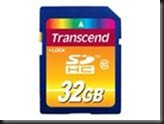
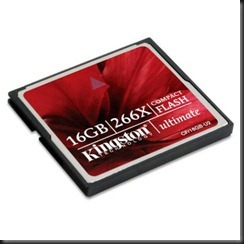 The replacement for film is the memory card. Make sure you have more than enough memory before you leave. Memory is cheap. I don’t like to delete my files until I get them all safely home and get them all uploaded to my computer with a backup. And I even take my laptop with me and upload my photos every night right next to those recharging batteries.
The replacement for film is the memory card. Make sure you have more than enough memory before you leave. Memory is cheap. I don’t like to delete my files until I get them all safely home and get them all uploaded to my computer with a backup. And I even take my laptop with me and upload my photos every night right next to those recharging batteries.
If you just shoot still pictures you can pretty well estimate the amount of storage you’ll need. But if you shoot videos all bets are off. That’s when those 16GB and larger memory cards make a whole lot of sense.
This would be a good place to mention file formats and file sizes. Your images are stored in files on your memory card. There are two file formats – JPEG and RAW. All cameras support JPEG and all digital SLRs support RAW. A few handful of point and shoots also support RAW.
RAW image files are much larger than JPEGS. You can figure about 1MB per 1M pixel. JPEG files are a quarter that size, perhaps even smaller. Your camera manual will give you guidelines for file sizes.
If you’re serious about your photography and want to get the absolute maximum quality from your images the best format is RAW. JPEG files on the other hand are much smaller because they’re compressed – a lot. The important thing to understand about JPEG files is each time they are compressed they loose some of the data. So each time you save a JPEG file it is degraded. Do it too many times and you’ll ruin the picture.
Convenience
A discussion of digital cameras wouldn’t be complete without talking about convenience. There’s not question that point and shoot cameras are incredibly convenient. Many are small enough to carry around in your shirt pocket, handbag or at worst a pouch on your belt. Digital SLRs are bulky and a lot heavier. You can pack everything you need for a point and shoot in a fanny pack. It takes a full on camera bag to tote a digital SLR around with all the lenses, filters and other paraphernalia you end up with.
On the other hand there’s no question that the digital SLR is a lot more flexible and versatile and produces higher quality images. Does that matter? Well in one sense it depends on what you intend to do with the pictures. If the only way they’ll ever be displayed is on Facebook you don’t need a good camera. But if you want to photograph distant objects, a telephoto lens on a digital SLR is what you need. The other unassailable reason for choosing a digital SLR over a point and shoot is, well, simply because you want one.
Summing It All Up
We’re at the point where the decision is now up to you. To help you out I’ve prepared a comparison chart with my recommendations.
| Feature | Point and Shoot | Digital SLR |
| Sensor | 10M pixels max | !2M+ pixels |
| Lens | 6X-12X optical zoom | Two or three lenses that cover the range from 20mm to 200mm |
| Image Stabilization | Definitely | Definitely – in at least one lens or your camera body |
| Modes | A good selection is standard | A good selection is standard |
| Movies | Yep but get very large memory cards | Same answer |
| Flash | It comes with the camera | It comes with most cameras |
| Batteries | Rechargeable | Rechargeable |
| Convenience | The hands down winner | More cumbersome, no doubt about it |
| Flexibility | Has limitations, no doubt about it | As flexible as you can afford. More lenses are a simple matter of money. |
You might be wondering where I come down on all this. I’m sure you assume I shoot a professional digital SLR. And you’d be right – at least half of the time. The truth is I shoot both. My big Canon is a 1Ds Mark III, an incredible camera. It has a 21M pixel full frame sensor with a stable of four very excellent lenses that cover the focal length range from 17mm to 320mm. I always shoot in RAW and process my images in Lightroom and Photoshop.
My don’t-leave-home-without-it camera is a Canon G11. I don’t know how I ever got along with out it. It goes with me everywhere. I really appreciate it convenience and can honestly say my compositions have improved in the nearly two years I’ve owned it. I shoot with a lot more than my big Canon and, well, you improve at the things you practice. It has a 10M pixel sensor and a 6X optical zoom lens. It also shoots in RAW which was a major reason for selecting it. I process its images in Lightroom and Photoshop.
So if you’re going to be heading out to buy a camera I envy you. A new camera, lens, filter or even a packet lens tissues turns any month into Christmas. Regardless of whether you’re purchasing a new camera or getting another year out of your old one, the most important thing is to enjoy your camera and capture those priceless moments.
The next article I post in this series will deal with how to get ready to get the most out of your vacation photography.
We do photography workshops. Come on out and join us. Click here to check us out.
You can also check out our photography. Click here.
(1474)
